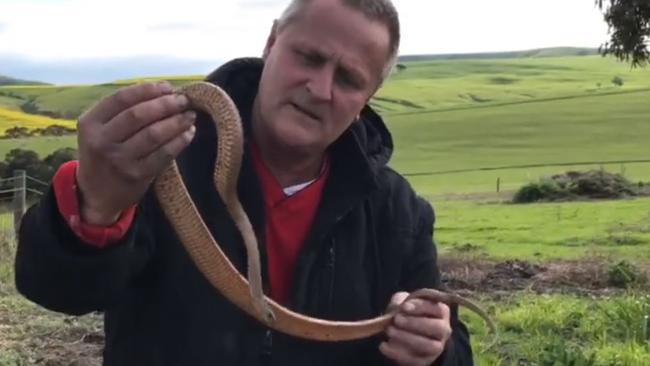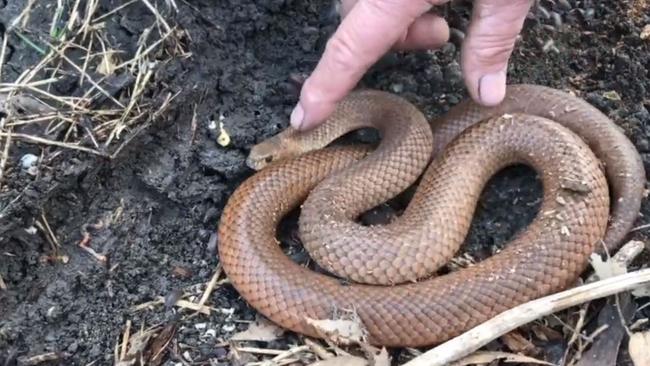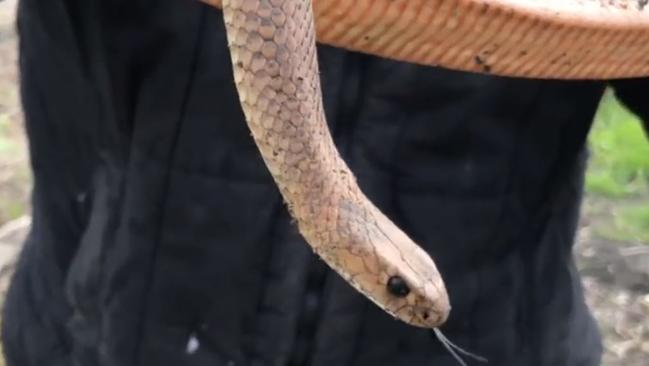Warning mice plague will bring more snakes to Adelaide backyards in the summer
SEE THE VIDEO: Tickling a deadly brown snake on the head seems like a really, really bad idea but there’s method in Rolly Burrell’s madness. Find out why SA is in for a huge snake season that’s started early.
SA News
Don't miss out on the headlines from SA News. Followed categories will be added to My News.
A MICE plague brought on by a wet summer may have attracted more snakes to the Adelaide metropolitan area, experts say.
Rolly Burrell, from Snake Catchers Adelaide, caught two eastern brown snakes in the last two days — one under a log at Normanville and another at Bellevue Heights.
The property owner from Normanville called the reptile service after finding a brown snake curled up under a log in the cold weather.
Mr Burrell arrived on the scene and scooped it up with bare hands — but, he hastens to add, don’t try this at home.
“It was freezing cold and it wouldn’t have been fast enough to bite me,” he said.
“If it was warmer I wouldn’t have done that.”
At Bellevue Heights, one of the company’s snakecatchers pounced on a half-grown adult which was more active than the first as it “had been sunning”.

Mr Burrell predicted it would be a busy year with more snakes found in the suburbs.
“We already have two a week in winter and that’s really unusual,” he said.
“It’s going to be a busy year.
“There are lots of rats and mice ... and that’s the reason why snakes come into residential areas — for mice.”
Earlier this year, a bumper harvest season alongside the wet summer had resulted in a mice plague across South Australia.
The destructive mouse plague, alongside low rainfall in autumn, continued to create problems for grain farmers on the Yorke and Eyre peninsulas as they struggled to sow their crops in time.
Keeping mice numbers down was one way to avoid attracting snakes to residential areas.
With spring and warmer weather approaching, Mr Burnell warned the public not to touch snakes, or their eggs, and call for professional help.
Eastern brown snakes are responsible for 60 per cent of snakebite deaths in Australia.

Tom Dunning, from Snake Away Services, said it was possible the dry winter and more mice had set up great breeding conditions for snakes.
“I think there will be a slight increase in sightings as snakes follow their food source,” he said.
“I won’t be surprised there would be more hatchlings because of the dry winter and more mice.”
Although he hadn’t noticed a marked increase in snake numbers and that sightings this winter were comparable with last year, he expected more calls would follow the warming weather.
“Once we see more steady warmer days, a lot more snakes would start to pop up,” Mr Dunning said.
“Some people are doing their early spring cleaning and there have been finding them (snakes) in storage or trash piles.”



